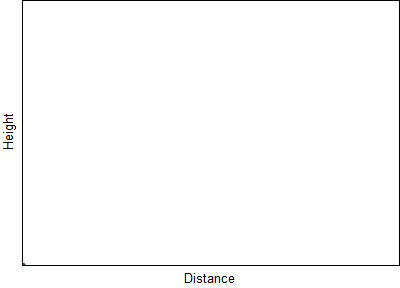Parametric equations are equations which depend on a single parameter. You can rewrite
A common example occurs in physics, where it is necessary to follow the trajectory of a moving object. The position of the object is given by

Trajectories
A trajectory is a useful place to use parametric equations because it relates the horizontal and vertical distance to the time.
This way of expressing curves is practical as well as efficient; for example, one can integrate and differentiate such curves term-wise. Thus, one can describe the velocity of a particle following such a parametrized path as:
where
The acceleration can be written as follows with the double apostrophe signifying the second derivative:
Writing these equations in parametric form gives a common parameter for both equations to depend on. This makes integration and differentiation easier to carry out as they rely on the same variable. Writing